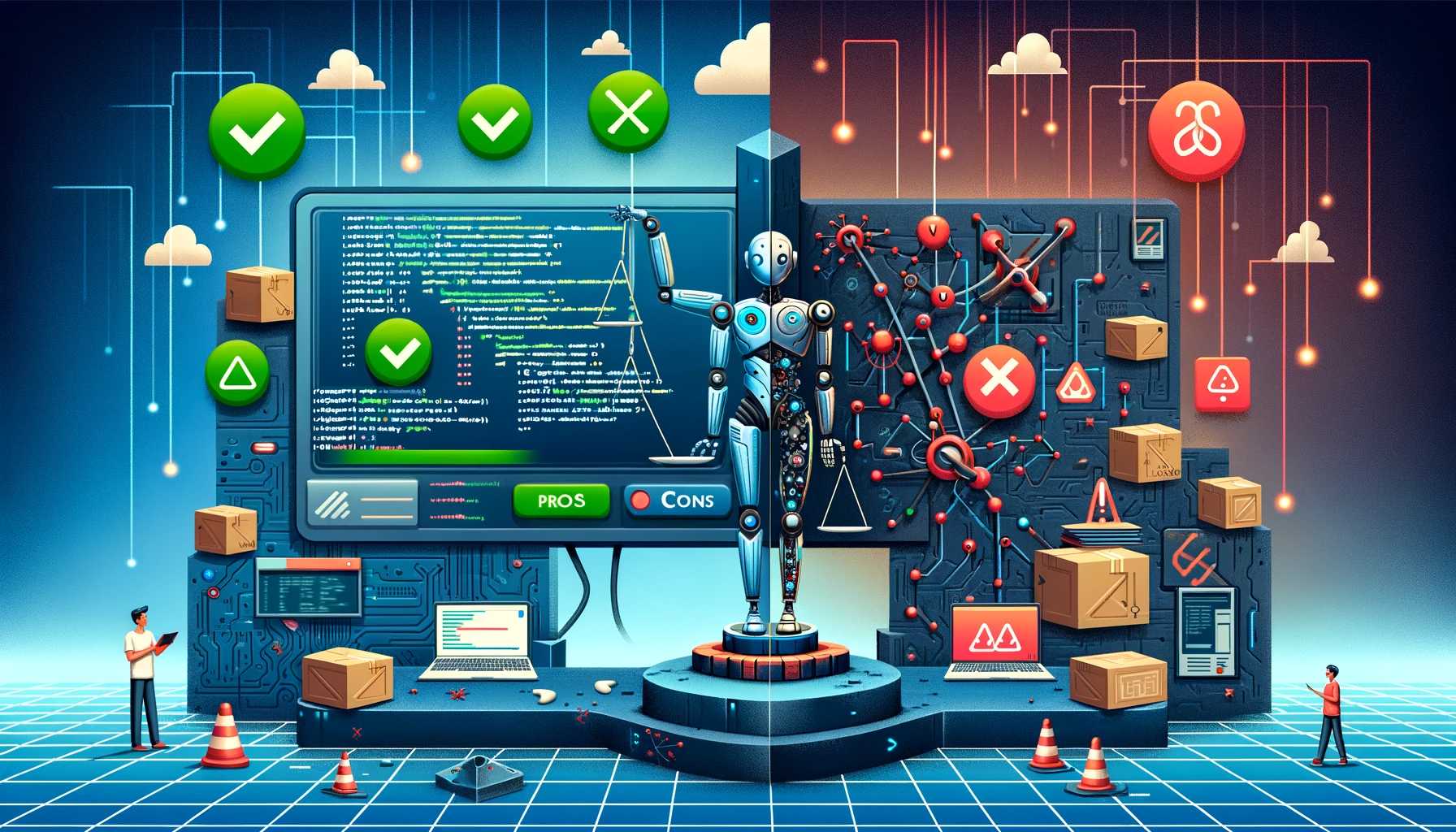Self-Fixing and Auto-Code with AI - Weighing the Pros and Cons
Hey there, tech enthusiasts and curious minds! Today, we're diving into the fascinating world of self-fixing and auto-code powered by artificial intelligence. It's like having your very own coding wizard – but, as with any magic, there are debates over the pros and cons. Let's embark on this journey together and explore the potential, challenges, and everything in between.
The Pros: When AI Plays the Coding Hero
1. Swift Issue Resolution:
Imagine a world where your code could heal itself, like a superhero swooping in to save the day. With self-fixing capabilities, AI could detect and resolve bugs and glitches faster than you can say "debug." This means less downtime, more efficient workflows, and a happier team.
2. Enhanced Productivity:
Time is money, and in the world of coding, every minute counts. Auto-code features could significantly boost productivity by automating repetitive tasks and generating code snippets. Developers could then focus on the creative aspects of their work, pushing the boundaries of innovation.
3. Reduced Human Error:
Humans, being well, human, are prone to errors. But what if there was a safety net? AI-powered self-fixing and auto-code systems can act as a vigilant guardian, catching potential mistakes before they wreak havoc. This not only improves the quality of the code but also provides a sense of security to developers.
4. Accessibility for All:
Coding can be intimidating, and not everyone is a seasoned developer. Self-fixing and auto-code functionalities could democratize coding by making it more accessible to a broader audience. This inclusivity might lead to a surge in creativity and innovation across various industries.
5. Continuous Learning and Improvement:
AI learns and evolves – it's like having a coding assistant that gets better with each task. As the system encounters new challenges and adapts to different coding styles, it continues to refine its capabilities. This perpetual learning loop could result in a powerhouse of coding expertise at your fingertips.
The Cons: Navigating the Challenges
1. Loss of Human Touch:
Coding is an art, and every coder brings their unique perspective and problem-solving skills to the table. The concern here is that relying too heavily on AI might lead to a loss of the human touch – that special something that makes code not just functional but also elegant and efficient.
2. Job Displacement Fears:
One of the most significant debates surrounding AI in various industries, including coding, is the fear of job displacement. If machines can code and fix themselves, do we still need an army of human developers? Striking the right balance between automation and human input is crucial to address these concerns.
3. Ethical Dilemmas:
As AI becomes more sophisticated, ethical concerns arise. Who sets the moral compass for an AI system fixing code? Can biases be inadvertently embedded in the algorithms? These are questions that need careful consideration as we hand over more responsibilities to intelligent machines.
4. Overreliance on AI:
While having an AI ally is fantastic, overreliance can lead to complacency. Developers may become less vigilant, assuming that the AI will catch and fix everything. This overconfidence could potentially result in overlooking critical issues or neglecting the essential skill of manual debugging.
5. Learning Curve and Adaptation:
Integrating self-fixing and auto-code features into existing workflows isn't a seamless process. There will be a learning curve as developers adapt to new tools and methodologies. Resistance to change, coupled with the time required for skill acquisition, might hinder the smooth adoption of these technologies.
Striking a Balance: The Middle Ground
So, where does this leave us? As with any technological advancement, finding the right balance is key. Here are some thoughts on how we can navigate the future of self-fixing and auto-code with AI:
1. Collaboration, Not Replacement:
Rather than viewing AI as a replacement, see it as a collaborative partner. AI can handle the repetitive, mundane tasks, freeing up human developers to focus on higher-level thinking, creativity, and problem-solving. This partnership could elevate the quality of the code produced.
2. Ethical Oversight and Transparency:
To address ethical concerns, there must be transparent oversight and accountability in the development and deployment of AI systems. Ensuring that AI is trained on diverse and unbiased datasets is essential to prevent the perpetuation of existing prejudices.
3. Continuous Learning for Developers:
While AI systems learn and evolve, developers must also embrace a mindset of continuous learning. Staying updated on the latest advancements, understanding AI capabilities, and refining manual coding skills will be crucial for navigating the evolving landscape.
4. User-Friendly Interfaces:
Creating user-friendly interfaces for self-fixing and auto-code tools can bridge the accessibility gap. Intuitive systems that empower users without deep coding knowledge can encourage a broader audience to engage with programming.
5. Flexibility in Implementation:
Different projects and teams have unique requirements. Providing flexibility in implementing AI features allows developers to tailor their workflows according to their specific needs. A one-size-fits-all approach might not be the most effective solution.
Conclusion: A Harmonious Symphony of Humans and AI
In the grand symphony of technology, humans and AI can play in harmony, each contributing their unique strengths. Self-fixing and auto-code capabilities have the potential to revolutionize the coding landscape, but the journey forward requires thoughtful consideration of the pros and cons.
As we stand at the crossroads of innovation, let's not forget the essence of coding – the creativity, the problem-solving, the human touch. By embracing AI as a valuable ally rather than a replacement, we can navigate the future with confidence, ensuring that our coding endeavors continue to reflect the best of both worlds. Here's to a future where humans and AI code together, creating a masterpiece of technological progress!









